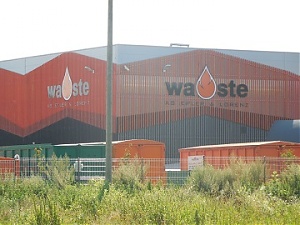Construction, Ecology, Estonia, Markets and Companies
International Internet Magazine. Baltic States news & analytics
Thursday, 25.04.2024, 02:24
Estonia: Epler & Lorenz to build waste incineration plant in Tartu for EUR 15 mln
 Print version
Print version |
|---|
The new plant will be built in a place on Ravila Street where there already is an incineration plant for hazardous substances, but while the current incineration plant has a capacity of 2,000 tons per year, the new plant is planned to have a capacity of 15,000 tons per year. The project is expected to be financed from own resources and a bank loan.
Janis Lorenz, member of the management board of AS Epler & Lorenz, told ERR that the new hazardous waste incineration plant will be the largest in Estonia to date. In particular, the plant will incinerate, for example, old oils and paints, glues, varnishes, hospital waste and old medicines.
Lorenz said that the new plant will be built with the aim of creating a more powerful, capable building in Estonia that meets new environmental requirements, which could also help Estonia to be able to handle its own hazardous waste.
"In Estonia, if we exclude oil shale ash, a little over 100,000 tons of hazardous waste is generated annually. The planned capacity of our incineration plant is 15,000 tons. We cannot talk about being able to accept all the hazardous waste now, we cannot do that. But first and foremost, we have tried to ensure that of the region of South Estonia and beyond, if possible, also the rest of Estonia," Lorenz said.
According to the member of the management board, the residential buildings and establishments located near the factory do not have to worry about the odor that is generated during incineration, because the planned factory will handle the waste completely inside the building. "And the building is actually under negative air pressure. Any odor emissions that are generated are burned, all the odors that are generated are sucked into the incinerator, and this ensures that nothing goes out of the building," Lorenz said.
According to Lorenz, the planned construction of the plant is currently at the stage in which an application has been made to the Environmental Board for the construction of the building and the building itself is being designed. Whether or not an environmental impact assessment is required is decided by the Environmental Board. As the same activity has been subject to environmental impact assessment for years, it may not be necessary to carry out a new assessment.
Riina Vaht, the integrated permit administrator at the Environmental Board, told ERR that the initiator of the environmental impact assessment can then also make a decision, for example, not to initiate it, first conducting a preliminary assessment.
Vaht added that, according to the Environmental Impact Assessment and Environmental Management System Act, it is also possible not to initiate an impact assessment if it has already been previously assessed and the assessor has sufficient information about the new activity. "A new environmental impact assessment can also be launched if we see that activities have changed dramatically," she added.
According to Tartu Deputy Mayor Reno Laidre, what will be the position of the City of Tartu on the issue of building a new and more powerful hazardous waste incineration plant will be clear once the environmental issues are clear.
- 28.01.2022 BONO aims at a billion!
- 30.12.2020 Накануне 25-летия Балтийский курс/The Baltic Course уходит с рынка деловых СМИ
- 30.12.2020 On the verge of its 25th anniversary, The Baltic Course leaves business media market
- 30.12.2020 EU to buy additional 100 mln doses of coronavirus vaccine
- 30.12.2020 ЕС закупит 100 млн. дополнительных доз вакцины Biontech и Pfizer
- 29.12.2020 Lithuanian president signs 2021 budget bill into law
- 29.12.2020 Number of new companies registered in Estonia up in 2020
- 28.12.2020 Для гастарбайтеров и "командированных" уже с 5 января в Латвии будут новые правила игры
- 28.12.2020 Рынок недвижимости Эстонии осенью начал быстро восстанавливаться
- 28.12.2020 Tartu to support students' solar car project








 «The Baltic Course» Is Sold and Stays in Business!
«The Baltic Course» Is Sold and Stays in Business!

